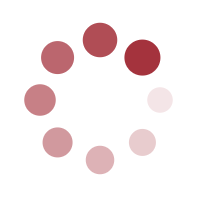
The most precious stone of Lessinia
Since prehistory, in the upper valley of Negrar, the people of Valpolicella used, extracted and worked a peculiar type of stone to create tools and shelters: “Prun stone”. It takes its name of the site of the main cave, even if nowadays it is better known as “Lessinia stone”, just as the mountainous area surrounding Verona it originates from. The particular conformation of this stone allows an easy extraction of slabs, locally called “lastame”: this can be clearly seen in various places, where it literally emerges from the ground.
However known and used for centuries before, fhe first official testimony of a quarry in this area dates back to 1204. The series of openings excavated along the rock butte that climbs the western flanks of the upper Negrar valley conceal in its interior one of the most extraordinary heritages of the culture of matter in Verona’s hillside landscape. They are not just an important testimonial of quarrying archaeology, but real monumental works — almost like majestic rock basilicas — created by anonymous stonemasons who, over the centuries, quarried and dressed the limestone from the living rock. This is the reason why it can be argued that it was not just men who modified the surrounding landscape, but also the landscape that modified men with their culture.

Valpolicella – Prun stone cave
Light pink, just like rosé wine
Prun stone is of calcareous-marmous origin and its colours, given the 73 strata it is composed of, range from white to light pink to bright pink — a colour that reminds wine lovers of rosé, the palest wines crafted in Valpolicella. Originally, this particular stone was locally used to create tools and shelters, then to build defensive walls and cabins floors, houses and roofs, cattlesheds and haylofts, basins and ice-houses, then to pave farmyards and squares.
It was also used and carved to create capitals and architectural elements for some local churches. The most ancient and beautiful examples are San Giorgio in Sant’Ambrogio, San Giovanni (on top of Mount Loffa), San Marco in Valgatara. Over the time, Prun stone became valued and much sought-after: during the Middle Ages, it was carried by land up to the Adige river, then it was shipped by waterway to Verona and to many cities along the Po valley, where it was used for refined buildings and street paving. The beautiful pink hue of Prun stone still colours the paving of Via Mazzini, right beside Piazza Bra, in the ancient heart of Verona.

Valpolicella – Prun stone layers
A treasure waiting to be discovered
Did you know that every single layer of Prun stone has been named by quarrymen using local terms? They describe their colour, thickness, common use, position, ease or difficulty of extraction and positive or negative features. And that you can still travel through time by visiting the “preare”, a series of majestic abandoned caves near Negrar? And that you can admire the fossils discovered in the clay separing the Prun stone layers in the Prehistoric and Paleontological Museum of Sant’Anna di Alfaedo?
Join one of our Valpolicella wine tasting tours and make sure to ask us about Prun stone. We will lead you to discover these fascinating hidden treasures of Valpolicella!


